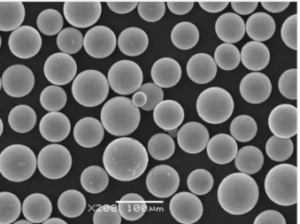Visão geral de Montagem da mesa de construção de alta temperatura
No mundo da fabricação aditiva e impressão 3D, a mesa de construção, também conhecida como placa de construção, é um componente crítico. Mas quando você está lidando com materiais de impressão de alta temperatura como PEEK, Ultem ou metais, uma mesa de construção comum não serve. É aí que entram as montagens de mesa de construção de alta temperatura. Essas mesas especializadas são projetadas para suportar temperaturas extremas, garantindo que suas impressões adiram corretamente e não deformem, mesmo sob as condições mais exigentes.
As mesas de construção de alta temperatura são cruciais para aplicações industriais onde precisão, durabilidade e consistência são inegociáveis. Elas são projetadas com materiais avançados que podem suportar temperaturas acima de 200°C, frequentemente integradas com aquecedores, sensores de temperatura e outros componentes que ajudam a manter o ambiente perfeito para seu material específico.
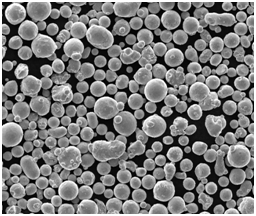
Composição da montagem da mesa de construção de alta temperatura
Compreender a composição de uma montagem de mesa de construção de alta temperatura é fundamental para escolher a correta para sua aplicação. Essas montagens são tipicamente feitas de uma combinação de metais, cerâmicas e compósitos, cada um escolhido por sua capacidade de lidar com altas temperaturas, mantendo a integridade estrutural.
| Material | Composição | Propriedades | Exemplos de uso |
|---|---|---|---|
| Ligas de alumínio | Alumínio com aditivos (por exemplo, 6061, 7075) | Alta condutividade térmica, leve, resistência moderada | Amplamente utilizado em mesas de alta temperatura de uso geral |
| Aço inoxidável | Ferro, carbono, cromo, níquel | Alta resistência, resistência à corrosão, menor condutividade térmica | Ideal para ambientes onde a durabilidade é fundamental |
| Inconel | Superligas de níquel-cromo | Excepcional resistência ao calor, resistente à oxidação | Usado em aplicações aeroespaciais e industriais de alta precisão |
| Aço para ferramentas | Carbono, tungstênio, molibdênio | Extremamente duro, resistente ao desgaste, mantém a resistência em altas temperaturas | Adequado para aplicações pesadas |
| Revestimentos cerâmicos | Carbeto de silício, óxido de alumínio | Resistência a altas temperaturas, não condutivo, resistente ao desgaste | Frequentemente usado como revestimento superior em mesas de metal |
| Compósitos de grafite | Grafite com aglutinantes de resina | Alta estabilidade térmica, excelente condutividade térmica, leve | Usado para processos de temperatura extremamente alta |
| Ligas de cobre | Cobre com aditivos como cromo | Excelente condutividade térmica, alta condutividade elétrica | Adequado para aplicações que precisam de resposta térmica rápida |
| PEEK | Poliéter éter cetona | Alta relação resistência-peso, excelente resistência química | Comum em processos de impressão de plástico especializados |
| Ultem | Polieterimida (PEI) | Alta estabilidade térmica, retardante de chama | Usado nas indústrias aeroespacial e automotiva |
| Polímeros reforçados com fibra de carbono | Fibras de carbono em uma matriz polimérica | Alta relação resistência-peso, rígido, resistente à deformação em altas temperaturas | Usado em aplicações leves e de alta temperatura |
Características da montagem da mesa de construção de alta temperatura
Ao avaliar as mesas de construção de alta temperatura, é importante considerar suas principais características, que afetarão diretamente a qualidade de suas impressões e a longevidade da própria mesa de construção.
Condutividade térmica
A condutividade térmica é crucial para uma distribuição uniforme do calor em toda a mesa. Metais como alumínio e cobre se destacam nessa área, garantindo uma temperatura consistente, o que é vital para evitar empenamento e garantir uma adesão uniforme em toda a impressão.
Estabilidade de temperatura
Materiais como Inconel e revestimentos cerâmicos são projetados para estabilidade em temperaturas extremas. Essa característica é essencial para indústrias de alta precisão, como aeroespacial e automotiva, onde
Durabilidade e Resistência ao Desgaste
O aço inoxidável e o aço ferramenta são conhecidos por sua durabilidade, especialmente em ambientes onde a base de construção pode estar sujeita a estresse físico, como na impressão industrial de alta resistência.
Propriedades de Aderência
A superfície da base de construção precisa fornecer adesão suficiente para manter a impressão no lugar durante o processo, mas também permitir a fácil remoção assim que a impressão for concluída. Revestimentos como PEI ou superfícies de alumínio especialmente tratadas são frequentemente usados para esse fim.
| Característica | Melhores Opções de Materiais | Importância |
|---|---|---|
| Condutividade térmica | Alumínio, Ligas de Cobre | Garante aquecimento uniforme e reduz a deformação |
| Estabilidade de temperatura | Inconel, Revestimentos Cerâmicos | Evita deformações e defeitos em processos de alta temperatura |
| Durabilidade | Aço inoxidável, aço para ferramentas | Garante longevidade e resiste ao estresse físico |
| Propriedades de Aderência | Revestimentos PEI, Alumínio Texturizado | Melhora a aderência da impressão, reduzindo impressões com falhas |
Vantagens de Montagem da mesa de construção de alta temperatura
Então, por que investir em um conjunto de base de construção de alta temperatura? Aqui estão os principais benefícios:
Precisão e Qualidade
As bases de construção de alta temperatura permitem a impressão de materiais de alto desempenho, resultando em peças com melhores propriedades mecânicas, resistência ao calor e desempenho geral. Essa precisão é crucial para indústrias como a aeroespacial, onde a falha de peças não é uma opção.
Versatilidade
Essas bases de construção podem lidar com uma ampla gama de materiais, desde termoplásticos de alta temperatura como PEEK e Ultem até pós metálicos usados na sinterização a laser direta de metais (DMLS). Essa versatilidade as torna indispensáveis em um ambiente de impressão multimaterial.
Longevidade
Materiais como Inconel e aço inoxidável são incrivelmente duráveis, o que significa que sua base de construção durará por muitos ciclos de impressão sem se degradar, mesmo sob condições contínuas de alta temperatura.
Resultados Consistentes
Com excelente condutividade térmica e estabilidade, essas bases fornecem resultados consistentes, o que é particularmente importante para a produção em lote, onde cada peça precisa atender a especificações rigorosas.
| Vantagens | Descrição |
|---|---|
| Precisão e Qualidade | Permite impressão de alta precisão com materiais de primeira linha, fundamental para peças de precisão |
| Versatilidade | Compatível com uma ampla gama de materiais de alta temperatura, aprimorando a capacidade da impressora |
| Longevidade | Materiais duráveis garantem que a base de construção dure mais, reduzindo os custos de substituição |
| Resultados Consistentes | Propriedades térmicas confiáveis fornecem qualidade de impressão uniforme, crucial para a produção |
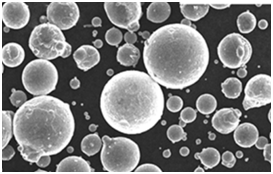


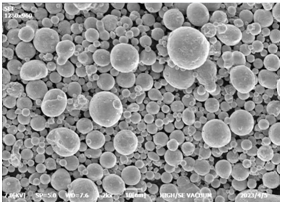
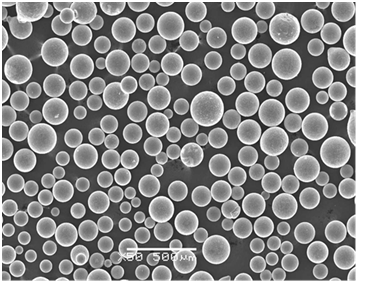

Aplicações do Conjunto de Base de Construção de Alta Temperatura
As bases de construção de alta temperatura são usadas em uma variedade de indústrias, cada uma com demandas e padrões exclusivos. Aqui estão algumas das aplicações mais comuns:
| Setor | Aplicativo | Material utilizado | Benefícios |
|---|---|---|---|
| Aeroespacial | Fabricação de componentes leves e de alta resistência | Inconel, Fibra de Carbono, PEEK | Alta precisão, resistência à temperatura, durabilidade |
| Automotivo | Produção de peças de alto desempenho, como componentes de motores e escudos térmicos | Aço Inoxidável, Ultem | Alta estabilidade térmica, resistência mecânica, resistência à corrosão |
| Dispositivos médicos | Implantes personalizados e ferramentas cirúrgicas | Titânio, PEEK | Biocompatibilidade, precisão, esterilizabilidade |
| Eletrônicos | Prototipagem e produção em pequena escala de placas de circuito e dissipadores de calor | Ligas de Cobre, Cerâmica | Excelente condutividade térmica, isolamento elétrico |
| Petróleo e gás | Componentes para ambientes de alta temperatura e alta pressão | Inconel, Aço Inoxidável | Resistência à corrosão, alta resistência em temperaturas elevadas |
| Defesa | Produção de componentes de armas e outras peças de alta tensão | Aço Ferramenta, Inconel | Durabilidade extrema, resistência ao calor, resistência ao desgaste |
| Energia | Peças para turbinas, reatores e outros equipamentos de produção de energia | Inconel, Aço Inoxidável | Desempenho em alta temperatura, resistência ao ciclo térmico |
| Bens de consumo | Itens especializados, como joias personalizadas, armações de óculos | Aço Inoxidável, PEI | Apelo estético, precisão, durabilidade |
| Arquitetura | Metalurgia personalizada para aplicações estruturais e decorativas | Alumínio, Aço Inoxidável | Integridade estrutural, resistência às intempéries, flexibilidade estética |
| Robótica | Componentes para sistemas robóticos de alto desempenho | Fibra de Carbono, Aço Ferramenta | Leve, forte, termicamente estável |
Especificações, Tamanhos, Graus e Padrões para Conjuntos de Base de Construção de Alta Temperatura
Escolhendo o certo Montagem do leito de construção em alta temperatura requer atenção a detalhes específicos, como tamanho, grau e adesão aos padrões da indústria. Aqui está uma análise das especificações mais comuns:
| Especificação | Detalhes | Materiais Típicos |
|---|---|---|
| Tamanho | Personalizável, tamanhos comuns incluem 300x300mm, 400x400mm, 500x500mm | Alumínio, Aço Inoxidável |
| Espessura | Varia de 5mm a 20mm, dependendo da aplicação | Inconel, Aço Ferramenta |
| Grau | Os graus de material incluem 6061 (Alumínio), 304 (Aço Inoxidável), 718 (Inconel) | Alumínio, Aço Inoxidável, Inconel |
| Acabamento da superfície | Texturizado, revestido ou polido, dependendo das necessidades de adesão | PEI, Cerâmica, Alumínio |
| Capacidades de Aquecimento | Aquecedores integrados podem variar de 100°C a 400°C | PEEK, Ultem, Aço Inoxidável |
| Padrões de Conformidade | ASTM, ISO ou padrões específicos da indústria, como ASME, FDA para uso médico | Varia por setor |
Fornecedores e Detalhes de Preços para Conjuntos de Base de Construção de Alta Temperatura
Aqui está um instantâneo de alguns dos principais fornecedores do setor, juntamente com detalhes de preços para ajudá-lo a tomar uma decisão informada.
| Fornecedor | Material Oferecido | Faixa de preço | Notas |
|---|---|---|---|
| McMaster-Carr | Aço Inoxidável, Ligas de Alumínio | $100 – $500 por folha | Bom para bases de alta temperatura de uso geral |
| Protolabs | Inconel, Aço Ferramenta | $500 – $2000 por conjunto | Construções personalizadas com alta precisão |
| Grainger | Alumínio, Aço Inoxidável | $200 – $800 por folha | Oferece uma ampla gama de tamanhos e espessuras |
| Sistemas 3D | PEEK, Ultem | $1000 – $5000 por conjunto | Especializa-se em bases termoplásticas de alto desempenho |
| EOS | Inconel, Fibra de Carbono | $3000 – $10000 por conjunto | Opções de ponta para aplicações industriais |
| Marcado | Fibra de Carbono, Aço Inoxidável | $1500 – $7000 por conjunto | Conhecidos por suas bases de construção de fibra de carbono |
| Stratasys | Ultem, PEEK | $2000 – $6000 por conjunto | Concentra-se em materiais termoplásticos e compósitos |
| Arcam | Titânio, aço inoxidável | $4000 – $12000 por conjunto | Especializa-se em manufatura aditiva de metal |
| Materializar | Alumínio, Aço Inoxidável | $500 – $3000 por conjunto | Fabricação personalizada com foco em detalhes |
| Renishaw | Inconel, Aço Inoxidável | $3000 – $10000 por conjunto | Aplicações de impressão de metal de ponta |
Comparando as Opções de Conjunto de Base de Construção de Alta Temperatura
Com tantas opções no mercado, como você escolhe? Aqui está uma comparação para ajudá-lo a avaliar os prós e contras:
| Material | Prós | Contras | Melhor para |
|---|---|---|---|
| Ligas de alumínio | Leve, com boa condutividade térmica | Menos durável em temperaturas muito altas | Impressão de uso geral |
| Aço inoxidável | Durável, resistente à corrosão, estável | Menor condutividade térmica em comparação com o alumínio | Ambientes de alta tensão |
| Inconel | Excepcional resistência ao calor, forte, resistente à oxidação | Caro, mais pesado que alumínio ou aço | Aeroespacial, fabricação de alta precisão |
| Aço para ferramentas | Extremamente duro e resistente ao desgaste | Pode ser frágil, especialmente em temperaturas muito altas | Aplicações industriais pesadas |
| Revestimentos cerâmicos | Resistência a altas temperaturas, não condutivo | Pode ser frágil, caro | Revestimentos para bases de metal em impressão de alta temperatura |
| Compósitos de grafite | Alta estabilidade térmica, excelente condutividade térmica | Pode ser caro, frágil em algumas configurações | Processos de alta temperatura extrema |
| Ligas de cobre | Excelente condutividade térmica, eletricamente condutivo | Pode corroer se não for devidamente protegido | Aplicações que exigem resposta térmica rápida |
| PEEK | Alta relação resistência-peso, resistência química | Caro, limitado a impressoras de ponta | Impressão de plástico especializada |
| Ultem | Alta estabilidade térmica, retardante de chama | Caro, limitado a aplicações industriais específicas | Aeroespacial, aplicações automotivas |
| Polímeros reforçados com fibra de carbono | Leve, forte, resistente à deformação | Pode ser caro, tamanho de impressão limitado | Aplicações leves e de alta temperatura |
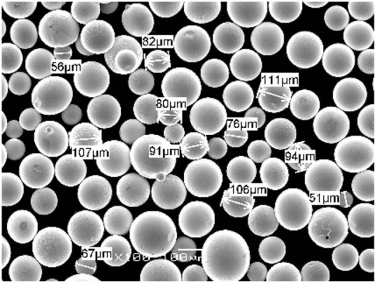
Perguntas frequentes
Aqui está uma seção de perguntas frequentes para responder a algumas perguntas comuns:
| Pergunta | Resposta |
|---|---|
| Qual é a temperatura máxima que essas bases de construção podem suportar? | Depende do material, mas, em geral, as bases de construção de alta temperatura podem suportar temperaturas de até 400°C ou mais. |
| Posso usar uma base de construção de alta temperatura para impressão 3D padrão? | Sim, mas pode ser exagerado, a menos que você esteja imprimindo com materiais de alta temperatura como PEEK, Ultem ou metais. |
| Como faço a manutenção da minha base de construção de alta temperatura? | A limpeza e inspeção regulares quanto a desgaste ou danos são cruciais. Para bases de metal, pode ser necessário um novo revestimento ocasional. |
| Existe uma diferença significativa na qualidade de impressão? | Absolutamente! A base de construção certa pode melhorar drasticamente a adesão da impressão, reduzir a deformação e resultar em impressões mais suaves e precisas. |
| As bases de construção de alta temperatura valem o investimento? | Se você estiver trabalhando com materiais de alta temperatura ou precisar de precisão em aplicações industriais, o investimento definitivamente vale a pena. |
| Posso adaptar uma impressora padrão com uma base de construção de alta temperatura? | Sim, mas certifique-se de que o firmware e o hardware da sua impressora possam suportar a carga térmica aumentada. |
| Essas bases exigem adesivos especiais? | Alguns materiais podem exigir adesivos específicos, enquanto outros dependem da textura ou revestimento da superfície para adesão. |
| Quanto tempo duram essas bases de construção? | Com a manutenção adequada, as bases de construção de alta temperatura podem durar anos, mas isso depende do material e da frequência de uso. |
Conclusão
Os conjuntos de base de construção de alta temperatura são um componente vital para qualquer pessoa envolvida em impressão 3D de alto desempenho ou industrial. Seja imprimindo com PEEK, Ultem, metais ou outros materiais exigentes, essas bases oferecem a estabilidade térmica, durabilidade e precisão necessárias para obter resultados de primeira linha. Investir no certo Montagem do leito de construção em alta temperatura não apenas garante uma melhor qualidade de impressão, mas também prolonga a vida útil da sua impressora e reduz a frequência de impressões com falhas. Com a ampla gama de materiais e configurações disponíveis, existe um conjunto de base de construção de alta temperatura adequado para cada aplicação, tornando-o uma consideração crucial para qualquer configuração de impressão 3D séria.

